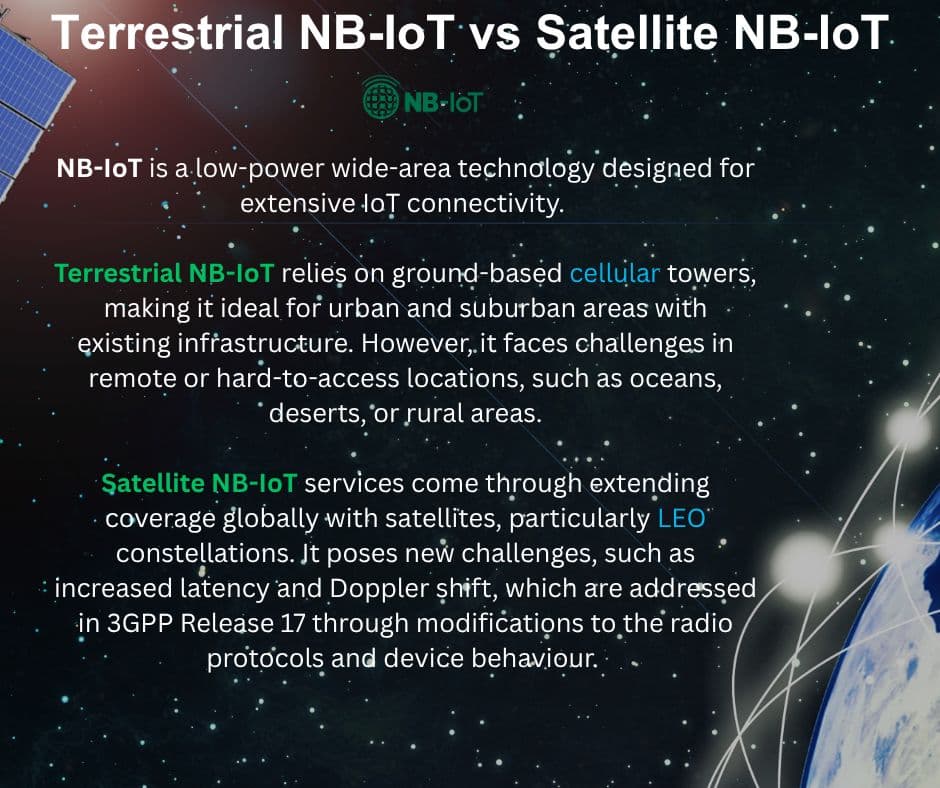Terrestrial NB-IoT (Narrowband Internet of Things) and Satellite NB-IoT are both low-power, wide-area (LPWA) technologies designed for IoT applications, but they differ in deployment, coverage, and use cases.
![]() Use Case:
Use Case:
![]() Terrestrial NB-IoT works well where cellular coverage is already available.
Terrestrial NB-IoT works well where cellular coverage is already available.
![]() Satellite NB-IoT fills the gap where no towers exist—like oceans, deserts, forests, or rural areas—without the need to deploy new infrastructure.
Satellite NB-IoT fills the gap where no towers exist—like oceans, deserts, forests, or rural areas—without the need to deploy new infrastructure.
![]() Standardization
Standardization
![]() Terrestrial NB-IoT: 3GPP Rel-13 to Rel-17
Terrestrial NB-IoT: 3GPP Rel-13 to Rel-17
![]() Satellite NB-IoT: Introduced in 3GPP Release 17 (NB-IoT over NTN)
Satellite NB-IoT: Introduced in 3GPP Release 17 (NB-IoT over NTN)
![]() Network Topology
Network Topology
![]() Terrestrial NB-IoT: Ground-based EPC/5GC with direct UE communication
Terrestrial NB-IoT: Ground-based EPC/5GC with direct UE communication
![]() Satellite NB-IoT: Either bent-pipe (transparent) or regenerative satellite.
Satellite NB-IoT: Either bent-pipe (transparent) or regenerative satellite.
![]() Latency
Latency
![]() Terrestrial NB-IoT: Typically <100 ms
Terrestrial NB-IoT: Typically <100 ms
![]() Satellite NB-IoT: Higher: ~20–40 ms (LEO), >500 ms (GEO)
Satellite NB-IoT: Higher: ~20–40 ms (LEO), >500 ms (GEO)
Hybrid solutions (e.g., devices that switch between terrestrial and satellite networks) are emerging for seamless IoT connectivity.
LinkedIn: ![]()
